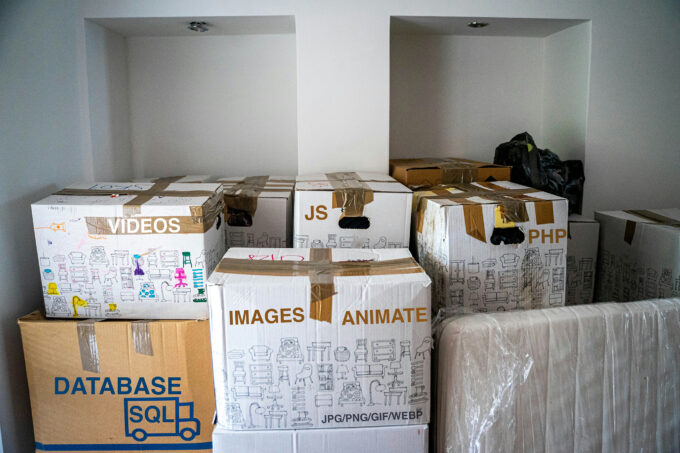Launching, backing up, or migrating a website can seem like a daunting task, especially if you’re not a tech wizard. But don’t worry! This guide will walk you through the essentials of website structure, the importance of backups, and the steps to take when migrating your site. Whether you’re running a static site, a front-end framework like ReactJS or Angular, or a CMS-driven site, we’ve got you covered.
Understanding Website Elements
When dealing with websites, it’s crucial to understand the various components that make up your site. There seems to be very many and it could be noisy but let’s demystify them. Here’s a breakdown:
Static Sites:
- Assets: Images, videos, and animations.
- HTML/CSS: The structure and style of your site.
- JavaScript: Interactive elements are mostly ran with those scripts.
Front-End Frameworks (ReactJS, Vue, Angular, NextJS):
- Assets: Similar to static sites.
- JavaScript Files: The core of your site’s functionality.
- Node Modules: Necessary for running your site locally and in production.
CMS-Driven Sites:
- Assets: Similar to both static and Front-end
- Front-End: Themes, templates, and styles.
- Back-End: Custom code, plugins, and modules.
- Databases: Store all your content, user information, and settings.
When making a backup, launching, or migrating a site, it’s vital to understand what type of a site you’re running and keep track of all these elements. Have them backed up and version-controlled whenever possible.
Importance of Frequent Backups
Backing up your site regularly is like having an insurance policy for your digital presence. Here’s why it’s essential:
- Data Loss Prevention: Protect against accidental deletions or server failures.
- Ease of Restoration: Quickly restore your site to a previous state in case of issues.
- Security: Keep copies of your site safe from hacks and malware.
Automated, server-level backups are particularly convenient. They ensure your data is regularly saved without manual intervention, and restoring from these backups is often straightforward.
Steps for Migrating Your Site
Migrating a website involves moving it from one hosting provider or environment to another. Here’s how to do it effectively:
- Compare Hosting Providers: Ensure the new host meets your site’s requirements and offers sufficient resources. Make sure it is “apples-to-apples” comparison. If your site runs on a popular CMS like WordPress, Joomla, Drupal etc – you will need a Linux Environment, MySQL database and PHP. Other CMS might require JAVA or .NET (Microsoft) Environment. Ask your current provider what it is for you if not sure.
- Prepare for Migration:
- Backup your current site.
- Keep your hosting active for a sufficient overlapping period with a new one, so you can always have a fallback plan.
- Check compatibility of server environments (PHP versions, database types, etc.).
- Move Your Site:
- Transfer files (via FTP or other methods).
- Migrate databases.
- Update DNS settings to point to the new host.
- When working with similar environments, the two providers can “talk” to each other. For example some hosts will allow cPanel to cPanel transfer. That takes care of all components in 1 click and all you have left to do is flip the switch (point the domain to a new provider) and see it work.
- Test Thoroughly: Ensure everything works as expected in the new environment. Make sure you’re not seeing some cached version be that in your own browser or a content delivery network which may appear like you’re live, but expire later…
- Ask for a boost: Give it some performance tests using Google Page Speed Insights or GTMetrix. Ask your new hosting provider to review the results of the tests and see if any additional caching, compression or allocated memory settings.
Launching a New Site
Launching a new site is similar to making a backup and migration but with some extra steps:
- Backup Before Launch: Ensure you have a copy of your current site.
- Security Tune-Up: Implement security measures like SSL, firewalls, and secure passwords.
- Performance Optimization: Compress images, enable caching, and optimize code.
- Content Optimization: Ensure all content is up-to-date and SEO-friendly.
Think of it as giving your car a final check before a road trip – you want everything running smoothly.
DIY vs. Professional Site Launch
Launching, backing up, and migrating a website can be a DIY task if you’re comfortable with the technical aspects. However, trusting an experienced web developer can be invaluable. They’re like mechanics for the web, ensuring everything is tuned up and running efficiently, allowing you to focus on your content and business.
In conclusion
Website management doesn’t have to be overwhelming. By understanding the different elements of your site, regularly backing up, and knowing the steps to migrate or launch, you can keep your digital presence secure and efficient. And remember, if you ever feel out of your depth, don’t hesitate to reach out to a professional. Feel free to contact us with any questions – we’re here to help!



